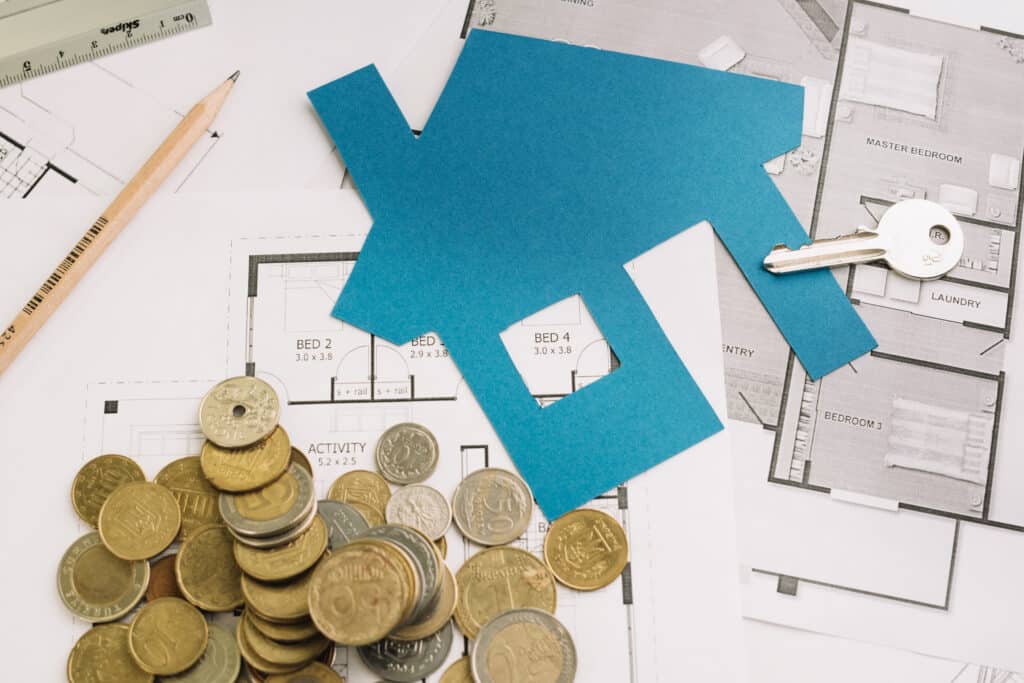
Understanding Investment Property Closing Costs in Texas
When new property investors think about the cost of having real estate investments, they might picture ongoing maintenance and repairs—approximately 1% of the property’s value per year. They may also think about the cost of the property itself—which isn’t insignificant, as the annual home appreciation rate in Texas is 8.48%. But because property investment is driven by the numbers, it’s also important to think about one of the other biggest costs involved: investment property closing costs.
The closing costs you pay on a property, especially as a seller, can easily come out to a hefty 8-10% of the selling price, so doing what you can to understand each line item and reduce the total cost is well worth your efforts. In this guide, we walk through how different types of real estate investment strategies should shape your perspective on closing costs, the closing costs you should expect to pay on either side of the transaction, and some strategic best practices to keep the closings costs for your investment properties as low as possible.
How Your Investment Strategy Should Shape Your Perspective on Investment Property Closing Costs
Before you start strategizing about how to manage investment property closing costs, it’s important to start by understanding the comprehensive list of common closing costs in Texas. There are several three-figure line items that add up, as well as much larger agent commission fees paid by the seller. But once you’re familiar with that list or have it printed out by your side, you can start examining it for fees you can reduce, negotiate on with the other party of the transaction, or do away with entirely.
Here, we break down closing costs when it comes to the two main categories of real estate investment: long-term ownership (or buy and hold) and short-term ownership.
Buy-and-Hold Strategies
If you’re a buy-and-hold investor, you plan on holding onto the property for a significant amount of time. While there’s no set minimum month- or year-long holding period, the expectation is that you will profit from (i) activities you manage with the property while you hold it, such as renting it out, (ii) appreciation that grew while you held the property, or both options.
Why does this matter when you’re considering closing costs? For a few reasons:
- You have a longer time to ensure profitability. The razor-thin margins that many short-term investors risk don’t apply here, so you have more room to take on fees. This is a crucial negotiation tactic if accepting the upfront cost of fees lets you get a more favorable sales price when you’re buying or selling. As long as you can keep track of your balance sheet throughout the entire time you own the property, you can make sure revenue outweighs the costs.
- You’re dealing with a particular type of property. For many buy-and-hold investors, especially if you’re interested in single-family residences, you may be purchasing a home from someone who has lived there for years. On the other side of the table, it’s an emotional transaction, not purely a business one. Presenting a clean and simple contract and taking on some of the fees may make your offer more appealing.
Related: Real Estate Investing Strategies with Derek Williams – Real Estate Real Fast EP16
- There are some costs you don’t want to compromise on. When you’re in the property for the long term, you want a solid home inspection from a licensed inspector you can trust. You will also want to make sure you get the HOA documents as early as possible to ensure there’s not a cap or a full restriction against short-term rentals (ex., Airbnb) or long-term rentals.
Fix-and-Flip Strategies
When you prefer fix-and-flip investing, it’s all about the numbers. Your priority is ensuring that the difference between what you can buy the property for and what you can sell it for is larger than not just the repair costs but also all the transaction fees and closing costs. It also needs to be worth your time—as your experience grows, you’ll get a feel for what your own hourly rate should be and what actions are or are not worth your time.
As a short-term property holder, you should be strategic when it comes to both the buying and selling side:
For buying:
- Minimize lender-related fees: Opting for all-cash purchases whenever possible simplifies the transactions and fees. Otherwise, try to opt for putting in at least 20% (the conventional down payment amount). This can remove some processing costs, eliminate potential PMI complications, and reduce your interest rate while you hold the property. There’s also little point in paying mortgage points to reduce your rate. Putting down a substantial down payment, even if you can’t cover the entire price, reduces the risk of a poor appraisal shutting down the deal.
- Find trusted partners for property-related fees: Title services are vitally important, so you don’t want to compromise on those aspects of the deal. However, working with the same title company frequently can either save you money or make the costs much more predictable. You may also have a home inspector partner or gain the experience to handle that process for yourself.
For selling:
- Know what seller concessions you’re willing to make: The offer price you get and accept isn’t static. During the option period (generally about five days), your buyer will have the property inspected and may try to negotiate down the price or request repairs based on what they find. Know how much of a margin you have for these concessions so you always know you’ll do more than break even.
- Forego the conventional real estate commissions: As the seller, you typically cover both the listing agent (3% of the sales price) and the selling agent for the buyer (3% of the sales price). But this adds up quickly. Explore cost-effective alternatives, such as flat-fee services or ‘a la carte’ options that will list your house on the MLS but gives you the flexibility to handle negotiations and marketing. You may not be able to offer less than 2 or 3% for the selling agent on the other side of the transaction, but any significant reduction of this large 6% sum is worth pursuing.
The Ultimate Goal Is to Reduce Costs—But It’s More Complicated Than That
It’s important to keep your main goal in mind for any investment property: making a profit. In real estate, the maxim is that you don’t make money when you sell a property—you made your money when you bought it by making a smart purchase, keeping your costs low, and not being too optimistic. So reducing your costs is a key facet of strategic investing and property purchasing.
Related: Buying a House in Texas: A Guide for 2023
However, it’s not as simple as getting your closing cost items as close to $0 as possible. As a buyer, you might offer to cover title fees but make a smaller offer than another prospective buyer who’s nit-picking their way through the contract. As a seller, you might cover some fees but refuse to make concessions. You might also chip away at closing costs by using online listing software, which isn’t as cheap as DIY FSBO but offers both significant cost savings and significant time savings while reducing the risk of errors or missing prospective buyers.
Best Practices for Managing Investment Property Closing Costs
Now that you’ve seen closing costs from multiple different perspectives, it’s important to look through the list of typical fees again with more scrutiny and context. As a buyer, you’ll frequently see these investment property closing costs in Texas:
- Loan fees (loan application, loan origination, underwriting, PMI, etc.): You can eliminate this as an all-cash investor. You can also remove PMI by paying at least 20% down, even if you can’t do all cash.
- Home appraisal: With an all-cash offer, you can eliminate the appraisal. In the event the appraisal comes back low and you’re taking out a loan, you can pay the difference—but only if you really believe in the property’s potential.
- Title search and insurance: The seller conventionally covers this, but it’s more likely to be a negotiation point or a buyer’s responsibility in today’s market. Find a trusted title company that offers good work and low, reliable fees.
- Surveys: Even if you’re buying in all cash to simplify the process, paying for a new survey can help make the boundaries of the property clear. It’s a good investment from the outset.
As a seller, you’ll often need to manage:
- Commissions for agents on both sides of the transaction: You can trim down this bulky cost—or even cut it in half—by learning how to negotiate and market your own deals. With the right software and services to manage the MLS listing and offer optional services, you won’t need a traditional listing agent.
- Concessions: Decide what your preferred approach to concessions is. For example, you might agree to (or negotiate for) a reduction in the sales price, a credit back at close, or handle the requested repairs yourself. Identify the option that is both cost-effective and time-effective for your resources.
- Miscellaneous property fees: This includes HOA fees, property taxes, and other elements of escrow. These will vary from property to property.
Cut Down on Investment Property Closing Costs by Cutting Out Inefficiencies, Not Cutting Corners
While every property is different, creating a process will cut down on inconsistencies and costly one-offs. At Listing Spark, we support real estate investors and property owners with money-saving online tools and services that keep your closing costs in check. You can eliminate half of your real estate agent commissions by using ListingSpark to manage the listing yourself, and you can turn to Spark Title to streamline your title fees. Reach out to our team today to walk through the closing costs in your next deal and see what you can do to make your investment more profitable.
Related Posts
How to Unlock Potential with Real Estate Software for Investors
In the fiercely competitive world of real estate investment, picking the right tools can be the difference between profit and losing money on a property. As digital innovation continues to reshape the landscape, a new…
Modern House Flipping Software: 8 Innovative Tools You Need
House flipping isn’t just an opportunity for big real estate companies or home improvement television channels—it’s becoming a reliable source of income for Americans running a solo business or small real estate investment venture. While…
Smart Savings: The Advantages of Flat-Fee Listing on the MLS
Selling a house traditionally has always been an arduous process, and right now, it’s even more turbulent. With the current NAR settlement shaking up commission processes and costs for buyers and sellers, investors have even…




